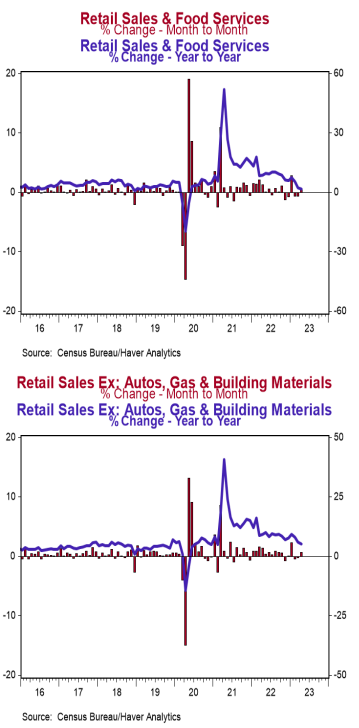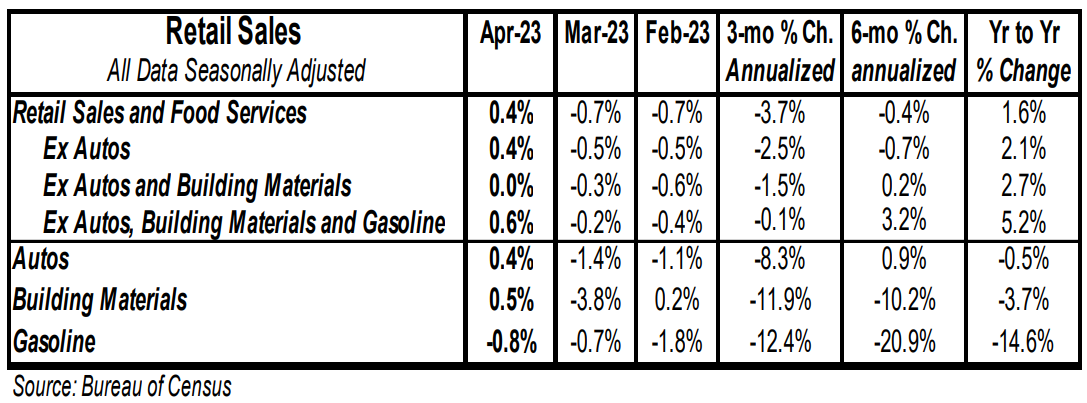- Retail sales rose 0.4% in April, lagging the consensus expected gain of 0.8%. Retail sales are up 1.6% versus a year ago.
- Sales excluding autos increased 0.4% in April, matching expectations. These sales are up 2.1% in the past year.
- The largest increases in April were for non-store retailers (internet & mail-order), general merchandise stores, and autos. The largest decline was for gas stations.
- Sales excluding autos, building materials, and gas rose 0.6% in April. If unchanged in May/June, these sales will be up at a 1.3% annual rate in Q2 versus the Q1 average.
Implications:
Retail sales bounced back modestly in April, rising 0.4%, but coming in below the consensus expected 0.8% gain. About half of the thirteen major retail categories rose in April, led by non-store retailers (internet & mail-order), general merchandise stores (think department stores), and autos. The largest decline was at gas stations, where sales have now dropped for the past six months in a row and are down 14.6% from a year ago. “Core” sales, which exclude the most volatile categories of autos, building materials, and gas stations, and is an important measure for estimating GDP, rose 0.6% in April and are up 5.2% from a year ago. In the last twelve months, overall retail sales are up only 1.6%, the slowest yearly gain since the early stages of COVID. Sales at restaurants & bars, the only look at the service sector we get in this report, rose 0.6% in April and are still up a healthy 9.4% from a year ago. The consumer continues to shift more of their purchases to services over the goods sector, a trend that will continue throughout the year. “Real” (inflation-adjusted) retail sales, are down slightly from where they were two years ago and we expect them to be roughly flat to down in the year ahead. Consumers continue to face a headwind from inflation, which is fully offsetting gains in hourly pay. Meanwhile, the very loose monetary policy of 2020-21 has translated into higher inflation, which is why “real” (inflation-adjusted) retail sales are down versus a year ago. Our view remains that the tightening in monetary policy since last year will eventually deliver a recession.





